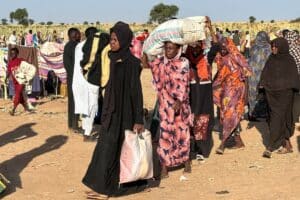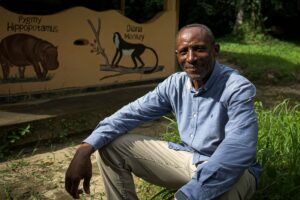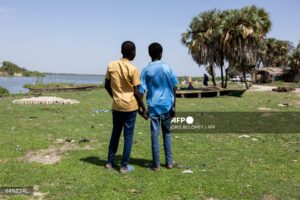Friday, August 09, 2024
Bukavu, DR Congo
Sanctuary to the last gorillas of the eastern plains, the Kahuzi-Biega National Park (PNKB) in South Kivu province is undergoing large-scale deforestation, mainly as a result of armed violence in the east of the Democratic Republic of Congo, warn local organizations.
In a recent report, the Synergie des organisations de la société civile pour la promotion des droits humains et l’environnement (SYDHE) (Synergy of civil society organizations for the promotion of human rights and the environment) and the Institut pour la gouvernance et l’éducation électorale (IGE) (Institute for governance and electoral education) deplored the fact that some 1,500 trees are cut down in the park every month, then cut into planks or transformed into charcoal.
Transported in private vehicles, on motorcycles or on their heads, the boards and bags are taken to Bukavu, the capital of South Kivu, but also by boat across Lake Kivu to Goma, in the neighboring province of North Kivu.
Demographic pressure is blamed as the main cause of deforestation, but the situation has also worsened with the worsening security situation in North Kivu.
“Several areas of the Masisi and Rutshuru territories are occupied (by the M23 rebellion, active since the end of 2021) and, to obtain wood, the population has no other alternative than the Kahuzi-Biega park”, says Patrice Lwabaguma, one of the report’s authors.
Innocent Bayubasire, head of office at the provincial environment and sustainable development coordination office, assures us that “forest controllers” have been deployed in the park’s riverside territories. “In the village of Kasheke, for example, they boarded three boats carrying 8,900 bags of embers and two motorized pirogues loaded with over 700 bags,” he said.
“Illegal mining and charring are among the major dangers affecting the ecological integrity” of the park, responded PNKB management. “The period from 2019 to 2023 constitutes the peak of deforestation, with a steadily increasing rate,” the park said, in a text signed by its director Arthur Kalonji Mulamayi.
The affected areas “are occupied by armed people or protected by armed groups who practice carbonization, timber cutting and illegal mining on a large scale”, he laments.
“The Park and its partners” have taken action with the authorities to “neutralize these people who are destroying the Park”, the Park’s management assures us. “At the same time, the Park is conducting awareness-raising campaigns with local communities” to convince them of “the importance of preserving this natural treasure”.
Covering an area of 6,000 km2, the PNKB, home to the last remaining Eastern Lowland Gorillas (graueri), was declared a World Heritage Site in Danger in 1997.
Humaniterre with AFP




